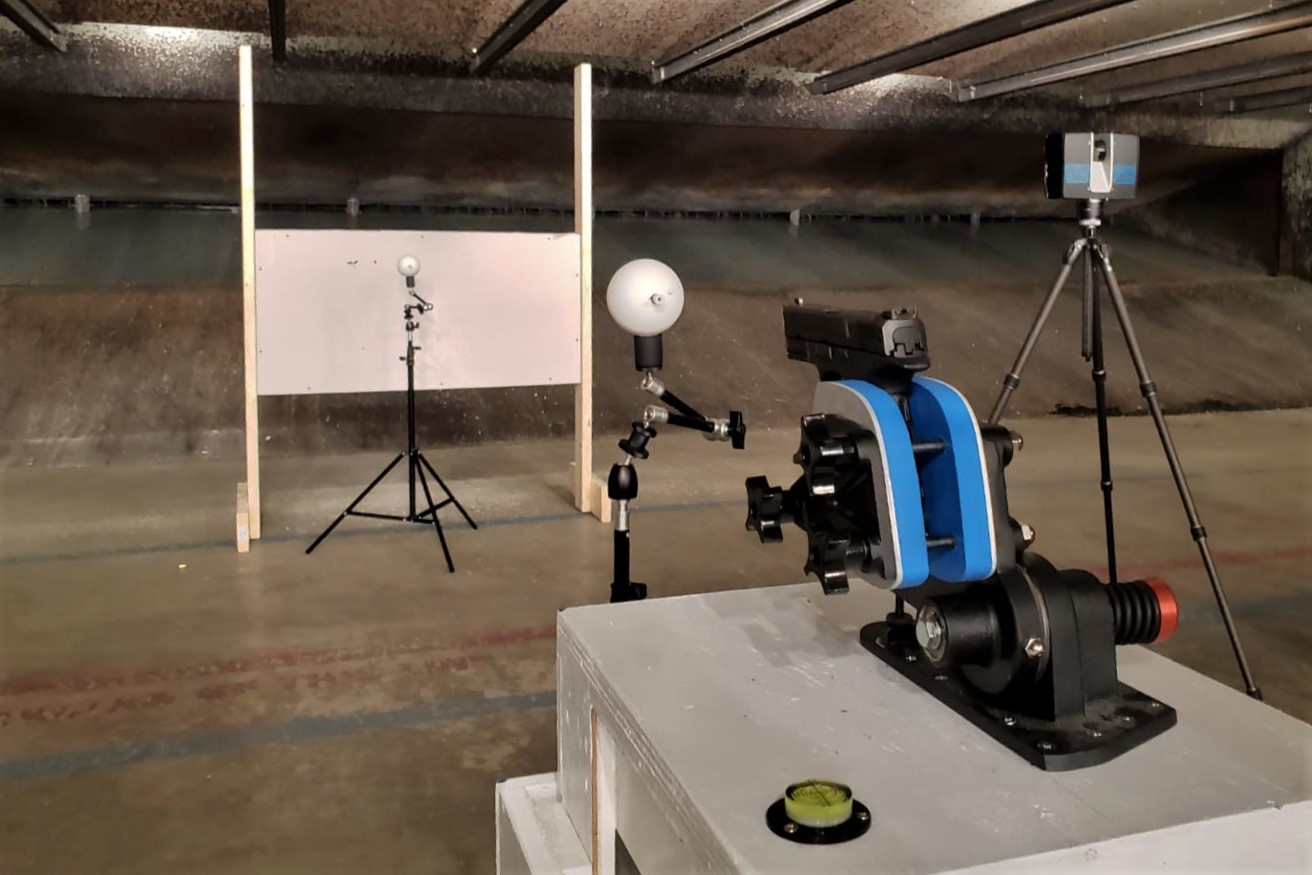Description: My research project was to examine the accuracy of backtracked bullet trajectories reconstructions. The recent increase in gun violence has made it even more important to correctly estimate shooting locations for crime scene reconstruction. I conducted the research to help investigators create more accurate shooting reconstruction procedures that would provide more precise answers. Current shooting reconstruction methods for short firing distances use a simplification model which assume bullet fly in a straight path. However, a bullet’s trajectory is actually curved due to gravity and aerodynamic effects. My research used the positioning of the bullet holes to compare the actual bullet trajectory versus the simplification model trajectory. I took this picture during the experiment because it easily summarized the methods and material of the research. Before firing the gun, a laser pointer (not shown) was placed in the muzzle of the gun to guide the positioning of the two spheres. These spheres help the laser scanner capture the simplification model trajectory of the bullet as though the bullet would be traveling in a straight line. After the gun was fired, another two spheres were positioned onto a rod placed inside the bullet hole to capture the actual terminal trajectory. The pre- and post- firing scans were compared in a 3D visualization software and backtracked to the source.
Technique: I photographed the image on my phone while at the shooting range. I used GIMP to edit the lighting, and to remove the logo on the laser scanner (to meet the image specifications).
Acknowledgements: I would like to acknowledge my research supervisor Eugene Liscio for helping with the project. I would also like to acknowledge Peel Regional Police for allowing us to use their firing range.

